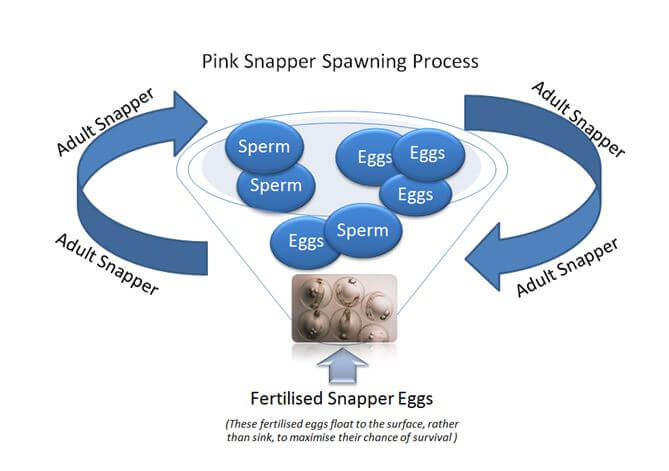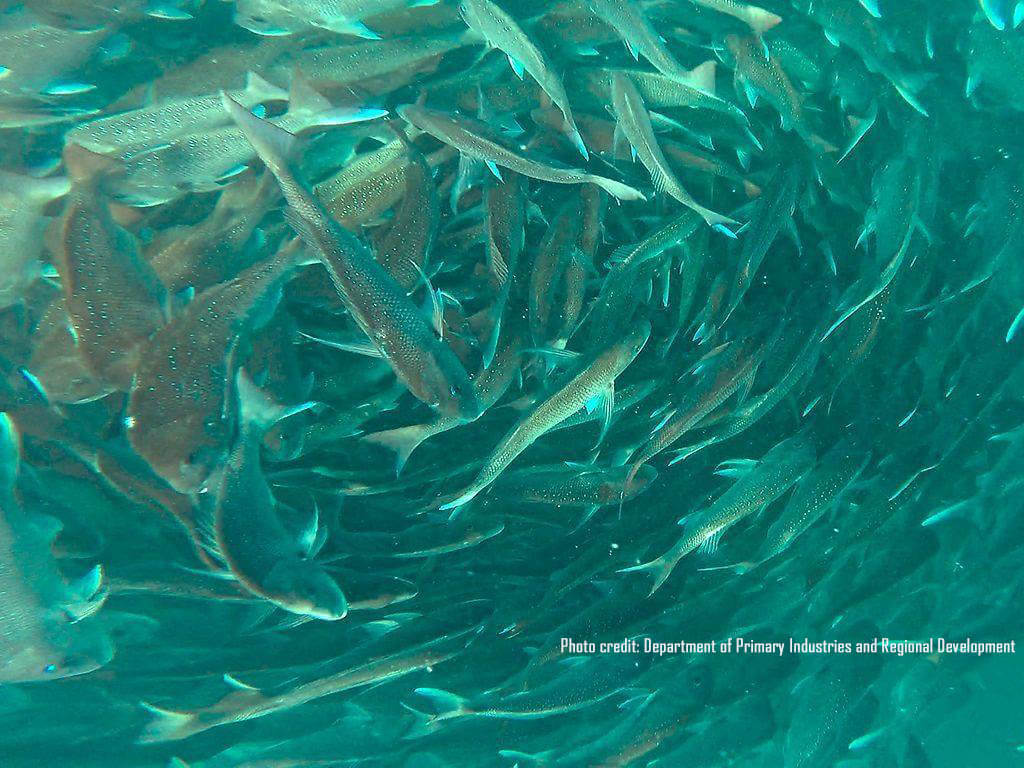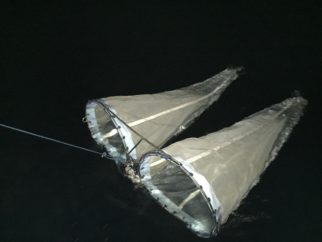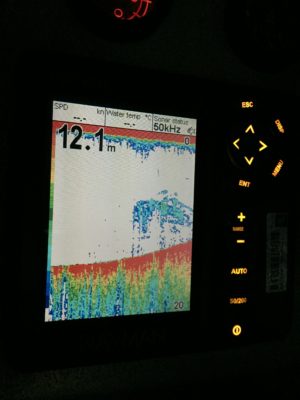Images of thousands of pink snapper forming incredible spiraling vortexes on the surface have recently gone viral!
These vortexes are huge spawning schools of snapper and are something that, up until the last few years, Australian fishers have rarely seen before and there is a very good reason why we are only just rediscovering this natural phenomenon!
Many species of fish return to the same location every year to spawn.

For pink snapper, there are a few particularly special locations that we rely on every year to ensure the future of the wild stock for this species. Cockburn and Warnbro sounds are the largest and most important spawning grounds for pink snapper in the entire West Coast Bioregion.
The late 1990s saw West Australian snapper fishers become increasingly concerned with the targeting of spawning fish in Cockburn Sound. Snapper come into the sound in great numbers through winter to begin their annual spawning activities in spring. This provided fishers with an easy opportunity to target these fish in a relatively calm, accessible location right on the doorstep of the metropolitan area.
As stewards of the marine environment, fishers of the day were uncomfortable with the amount of snapper being caught during the spring spawning period and approached Recfishwest to advocate for a spawning closure to protect these important breeding fish. It was the first closure driven by recreational fishers to ensure long-term protection for a species which they held so highly.
In 2000, the then-Fisheries Minister Monty House supported the recreational fishing sectors call for the protection of the spawning snapper and implemented a fishing closure in Cockburn Sound from September 15 to October 30. This decision was the catalyst for what is now one of the most highly regarded fisheries management arrangements in WA.
After 17 years and a few changes to the spawning closure, including the extension of the closure into January as well as the inclusion of Warnbro Sound, pink snapper are now amassing in numbers never seen by many local fishers. This has led to many fishers witnessing the spectacle that is spawning snapper for the first time in their lives.
As the snapper come together to spawn they begin to circle in the same direction close to the surface until they form a dense spiral of fish. The power of these fish is such that it creates a vortex in the centre of this aggregation. For many species of surface spawning fish, it is thought that this vortex assists the eggs in rising towards the surface more quickly than they would without the help of the vortex (Heyman et al. 2005). While these snapper vortexes are a natural phenomenon, they are something that most fishers across Australia have never seen in their lives.
While pink snapper have always spawned in Cockburn and Warnbro sounds, it has only been the last couple of years that this phenomenon has begun to be seen again and it is largely thanks to local fishers that we can witness this again.
Recfishwest CEO Dr Andrew Rowland remembers the day this snapper closure first came into play and commended the fishing community for driving the important decision.
“If it wasn’t for the foresight of a proactive fishing community 17 years ago, the story may be a little different, it’s something we all should be proud of,” Dr Rowland said.
The spiralling vortexes of snapper and great snapper fishing outside of seasonal closures suggest the stock is continuing on its road to recovery. As populations slowly return to a healthy level, who knows what we will discover next about this important and fascinating species.
Check it out for yourself, this footage was taken during this year’s spawning season by the team at www.ilovefishing.com.au
Read our world first project supporting Pink Snapper recovery:
https://recfishwest.org.au/news/behind-the-scenes-snapper-guardians-egg-collection/
Check out the latest Pink Snapper egg collection video from October 2017, where fertilised eggs are collected to contribute to our Snapper Guardians Program.
References:
Reef Fish Spawning Aggregations: Biology, Research and Management. 2012. Sadovy de Mitcheson. Y., Colin. P., Fish and Fisheries Series 35.
Spawning aggregations of Lutjanus cyanopterus (Cuvier) on the Belize Barrier Reef over a 6 year period. 2005. Heyman, W., Kjerfve. B., Graham. R., Rhodes. K., Garbutt. L. Journal of Fish Biology (2005) 67, 83—101



